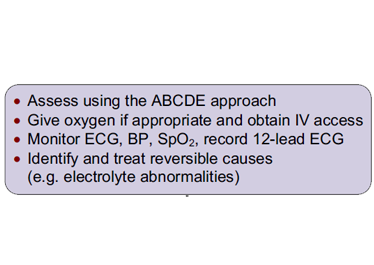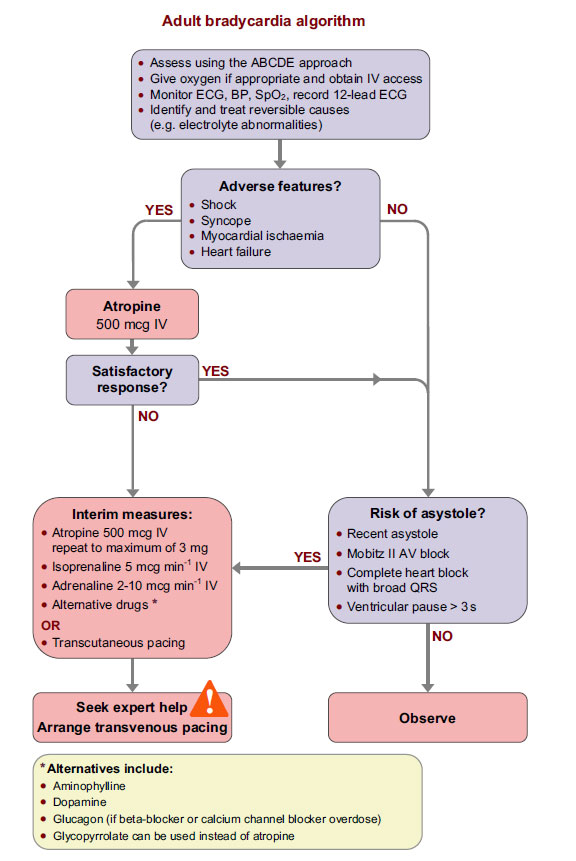
Bradycardia algorithm

When an arrhythmia is present or suspected, start by assessing the patient using the ABCDE approach.
Insert an intravenous cannula and, if appropriate, give oxygen.
Establish cardiac monitoring. Clinical assessment is of limited value in identifying the precise rhythm abnormality, but it is important to assess the effect of the rhythm abnormality and determine treatment. Whenever possible, record a 12-lead ECG at the earliest opportunity. This will help to identify the precise rhythm, either before treatment or retrospectively, if necessary, with the help of an expert.
Identify and treat any reversible causes.
Select Start to begin.
Assess the patient specifically for adverse features.
The presence or absence of adverse symptoms or signs will dictate the urgency and choice of treatment for most arrhythmias. These adverse features indicate that a patient is unstable and at risk of deterioration:
- Shock
- Syncope
- Heart failure
- Myocardial ischaemia
In addition extremes of heart rate (rates of less than 40 in the case of bradycardia) are often tolerated poorly.
Select More to continue.
If there are no adverse features, assess for the risk of asystole, using the checklist here:
- Recent asystole
- Mobitz II AV block
- Complete heart block with broad QRS
- Ventricular pause > 3 s
If there is no risk of asystole, then observe the patient.
Select More to continue.
If there are adverse features, administer atropine.
If there are no adverse features but there is a risk of asystole then interim measures should be considered including atropine, sympathomimetic drugs such as isoprenaline or adrenaline or transcutaneous pacing.
The emergency treatment of most bradycardias is with atropine and/or cardiac pacing.
If the response is not satisfactory it may be necessary to use sympathomimetic drugs such as isoprenaline or adrenaline as an interim measure.
The alternative to drugs is transcutaneous pacing.
Select More to continue.
The need for treatment depends on the haemodynamic effect of the arrhythmia and the risk of developing asystole, rather than the precise ECG classification of the bradycardia.
If transvenous pacing is necessary, seek expert help.
You can see the whole bradycardia algorithm by going to the algorithm tab.
Select Restart to review the algorithm or select Next to continue.






